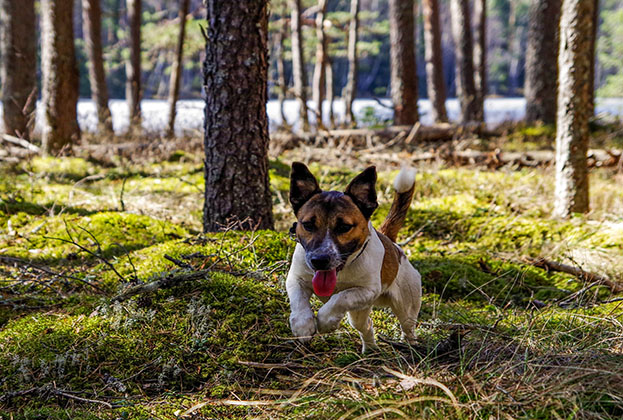
Your pet’s eyes, while being a window to their soul, are also a good indicator of many health issues. Commonplace age-related symptoms like clouding of the lens are worrying as it is, but if there are unusual or sudden symptoms related to the eyes, do not waste any time in visiting your neighborhood vet. Some basic steps to ensure that your pet’s eyes are protected:
KNOW YOUR PET PROBLEMS: Learn about eye and health issues that commonly affect your pet and how you can better care for their well-being. For instance, pugs and Persian cats, with their large eyes and flat faces, are prone to injuries and infections. Similarly, certain breeds have a higher rate of genetic disorders – photoreceptor dysplasia in Persian and domestic short hair cats; eye anomalies in collies and some herding dogs; and persistent pupillary membrane in mastiffs, basenjis, and corgis. While these conditions cannot be cured, the progression and damage can be controlled with timely care.
LOOK THEM IN THE EYE: Daily home examinations will help catch problems at an early stage. Have a close look at your pet’s eyes in a brightly lit area. If the eyes are pale, cloudy, red, bleeding, inflamed, crusty, watering, shrunken, immobile or squinted, have any growths, pigmentation or size changes, get a medical opinion immediately.
KEEP IT CLEAN: Clean your pet’s eyes every day. Gently remove dirt and discharge with damp cotton balls. Persistent runny eyes may indicate an infection. If you pet has hair around its eyes, regularly trim it to keep their field of vision clear and prevent hairs from poking the eye.
USE GENTLE PRODUCTS: Avoid irritating shampoos, sprays and cleaning lotions. Use animal-friendly products for cleaning and freshening the home as well, since volatile organic compounds in products like air fresheners irritate your pet’s eyes.
RETAIN ENOUGH MOISTURE: Depending on the weather, dryness can be a problem for pets. Heat exhaustion and poor hydration manifest quickly. Keep them well hydrated and make sure they have a cool place to rest.
LOCATION-PROOF THEM: In addition to the weather, geographic locations can create specific problems. For instance, blastomycosis, a fungal infection of the eyes, is common in pet dogs in river valleys like Mississippi. The pathogens live in soil along waterways and spores can be released with the slightest soil disruption. Similarly, thorny and spiny vegetation can cause eye injuries.
PROVIDE A SUPER DIET: A nutritious and balanced diet packed with antioxidants can go a long way in protecting your pet’s eyes and vision. Adding well-cooked eggs and fish or raw/pureed fruits and vegetables such as blueberries, carrots, kale, broccoli and sweet potatoes to your pet’s commercial food diet can help maintain optimal eye health.
Most importantly, do not forget to schedule regular wellness checkups and make sure that the vet checks your pet’s eyes during each visit.

